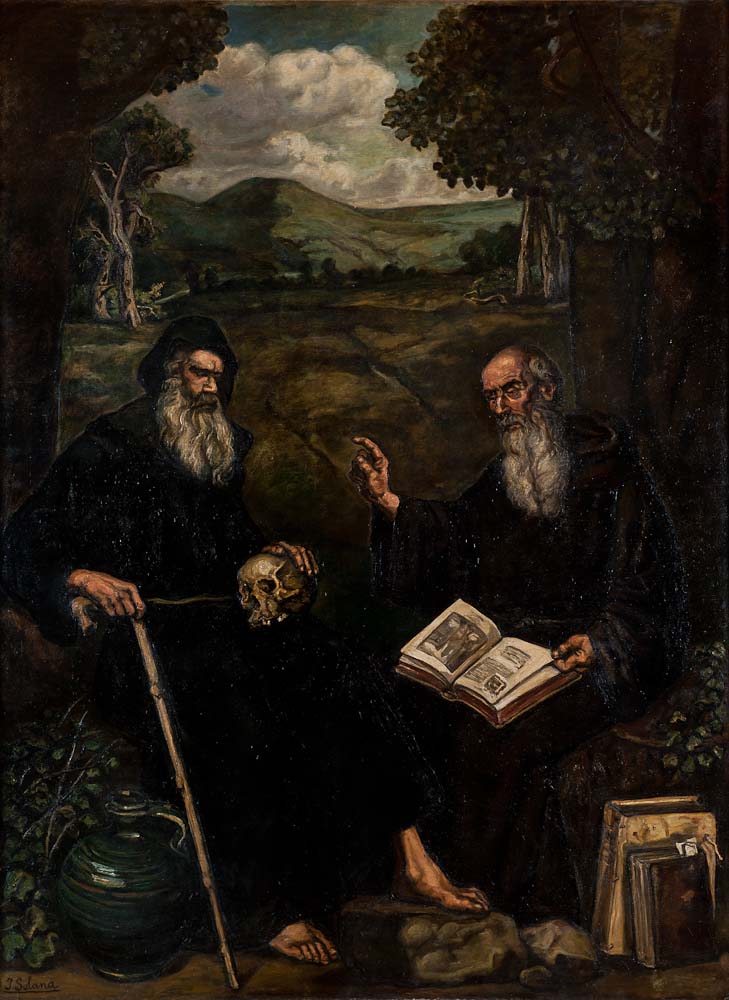
José Gutiérrez Solana (Madrid, 1886-1945)
The Hermits
ca. 1931
WORK INFORMATION
Oil on canvas, 220 x 170 cm
OTHER INFORMATION
Signed at the lower left corner “J. Solana”
Although isolated figures are not often depicted in Solana's religious themes, the figure of the hermit, a character devoted to the contemplative life, appears in two important works. In 1907, following the writings of Valle Inclán, he transferred to canvas the figure of a hermit praying, and in 1931, based on the 13th-century account by the Dominican Santiago de la Vorágine in La leyenda dorada, he painted the moment of the visit paid in the 3rd century by Saint Anthony Abbot to Saint Paul, the first known hermit in history.
This subject was depicted in 1634 by Velázquez, a painter whom Solana profoundly admired for his light and realism and whose work he undoubtedly saw on his regular visits to the Museo del Prado. His interpretation is notably similar to that of Velázquez in the treatment of the landscape, the arrangement of the scene and the use of colour.
This is a work of striking beauty in which the two saints are presented with great dignity in a rhomboidal composition of a classical type. The background landscape is possibly unique within Solana’s output, functioning as a hymn to nature rather than as a mere backdrop. Overall, the composition is based on an anonymous 17th-century painting that Solana had purchased in the Rastro in Madrid.
Solana presented The Hermits at the National Fine Arts Exhibition in 1945 and was posthumously awarded the Medal of Honour, the highest award for an artist. After his death, which took place at this time, his brother Manuel decided to keep the painting and in its place presented the Spanish State with The Procession of Death, now in the Museo Nacional Centro de Arte Reina Sofía in Madrid.
María José Salazar
